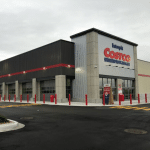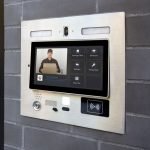User and personal identification is just one part of the complicated and technical world of access control, and it can be hard for those maintaining a commercial or professional property to determine what the best access control identification system is to suit their unique security needs. Here is a guide to choosing an access control identification system, as prepared by the access control installation experts here at UTS Group.
Advantages of Access Control Identification Systems.
Access control systems allow you to maintain control over who enters or exits your facilities based on the time they should be allowed access. There are different types of recognition technology of varying degrees of security – all of which replace keys entirely. Visitors simply need to approach the identification terminal with a keycard or key fob. If key cards or key fobs are lost, they can easily be deactivated remotely. Access control identification systems allow you to limit the access workers have to facilities.
Deciding on an access control identification system:
To make this important choice, you need to measure the differences between safety and practicality. In many cases where the access control identification system is easy to use, the convenience features could increase vulnerability and reduce security. However, more secure options such as a biometric or a combined biometric with token access control system are usually more inconvenient to use – as new users have to be registered into the system in person which can take time. The access control system you choose to install is based on the area that it’s supposed to protect. Less secure areas can be served well with simple token-based access control identification systems, while areas that require more security should be protected with biometric systems.
Types of Access Control Systems:
Keypad Access Control
These systems use a code or pin to verify access for users. They are cheap and easy to use, as they require no key fobs or keys. However, they do have the disadvantage of insecurity due to the possibility of users sharing the code with others. When you have this system in place it is important to make sure your employees don’t share the code with anybody.
Proximity / Radiofrequency Based Systems
These systems work with a specific object, usually a type of key fob. Proximity systems require a key fob to be placed near the reader, or close to the reader system (these devices require minimum maintenance). Radiofrequency based systems, usually used in garages, can be controlled from a command at a distance.
Biometric Systems
These systems allow users to identify themselves with a fingerprint, handprint, and in high-security locations, a retina scan. These systems are more costly, but provide greater security, as the permission criteria is truly unique to each user with authorized access. It eliminates the possibility of sharing credentials that is common with code-based systems. The only disadvantage of these systems is inconvenience, as it requires more time for each user to unlock the door, possibly creating a lineup in high traffic areas.
Combined Systems
Ideal for the most secure environments, these systems combine aspects of the above systems for a more strict security protocol. These systems require users to confirm their credentials in multiple ways, usually through a combination of a proximity token and a fingerprint, or a proximity token and a keypad code.
























